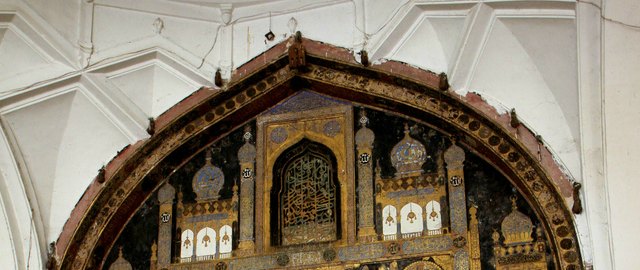
Bijapur
The Kalyani Chalukyas established the city of Bijapur in the 10th Century AD. The city changed hands and became part of the Khilji Sultanate during the second part of the 13th Century.
In 1347, the Bahmanis of Gulbarga took over the sultanate from the Khiljis only to be split into 5 states, known as the Deccan Sultanates, with the Adil Shahis taking control over Bijapur.
Gol Gumbaz
Gol Gumbaz (Round Dome) is the mausoleum of Mohammed Adil Shah (1627-55).

Gol Gumbaz
The topmost floor of all the 4 minarets opens out into a circular balcony, known as ‘Whispering Gallery’.
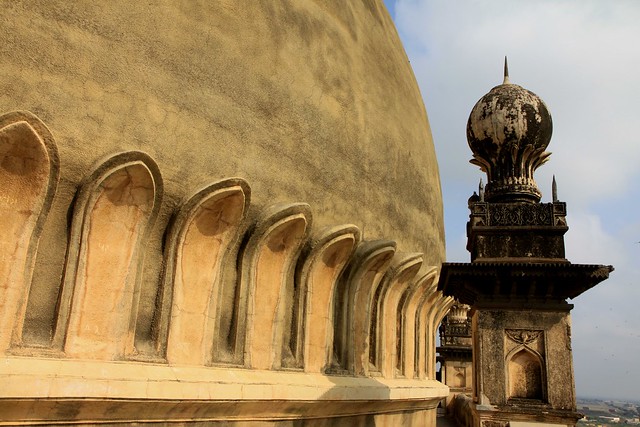
Outside Whispering Gallery
The amazing acoustics ensure that anything whispered in one corner of the gallery can be heard clearly on the diagonally opposite side.

Whispering Gallery
Jama Masjid
This large mosque was built by Ali Adil Shah I.
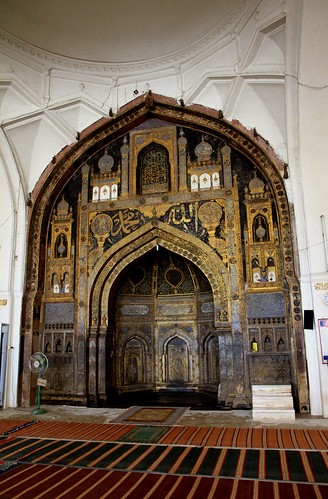
Inside the Mosque
It has a large prayer hall with beautiful arches and an exquisitely carved niche with quotations from the Quran inscribed in gold.
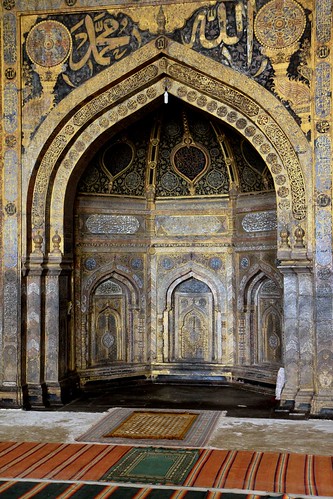
Niche with gold inscriptions
Ibrahim Rouza
This mausoleum complex, built by Ibrahim Adil Shah II (1580-1627), consists of a mosque and a tomb within a walled compound.

Ibrahim Rouza
Both the structures are elevated on a common plinth in the middle of a well manicured garden.
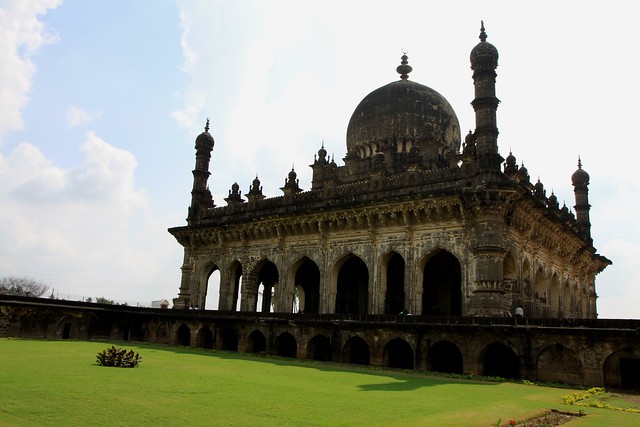
Tomb
Ibrahim II was known for his religious tolerance.
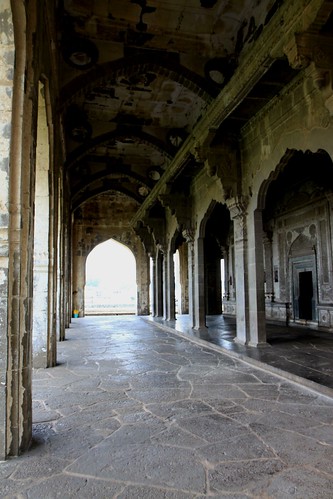
Gallery, Tomb
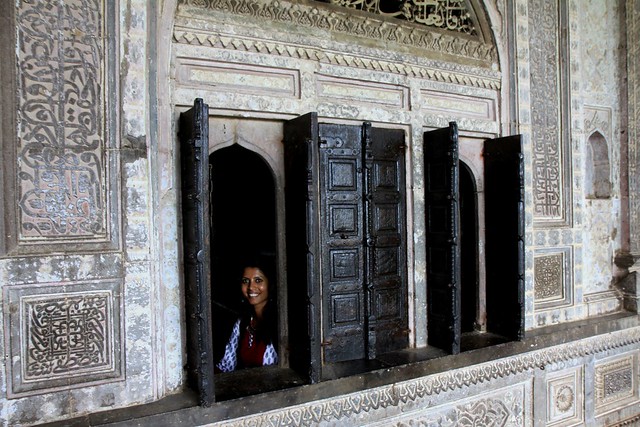
Shutters, Tomb
The inner chamber entombs the remains of Ibrahim Adil Shah II, his wife Taj Sultana, his mother Haji Badi Sahiba, his daughter and two sons.
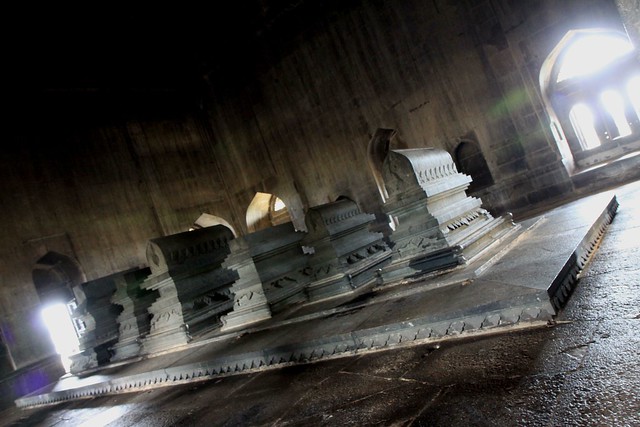
Tombs
The mosque has a rectangular prayer hall, a facade with five arches, and thin minarets at each of the four corners.

Mosque

Prayer Hall, Mosque
Bara Kaman
Bara Kaman (12 Arches) is the unfinished mausoleum of Ali Adil Shah II.
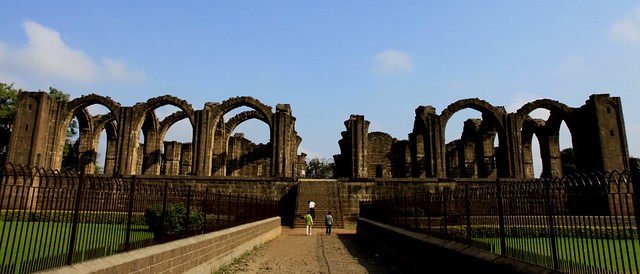
Bara Kaman
Ali Adil Shah II was only 18 years old when he succeeded to the throne in 1657. During his reign the kingdom faced constant threats from the Mughals and the Marathas.
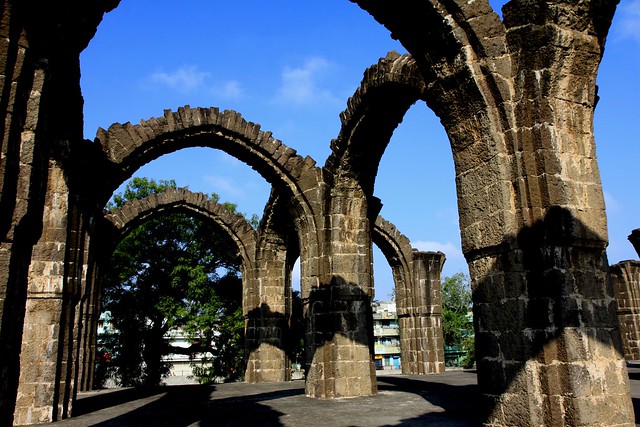
Inside Bara Kaman
Although he wanted to build a mausoleum of unmatched architectural brilliance, the work on the mausoleum was never completed.
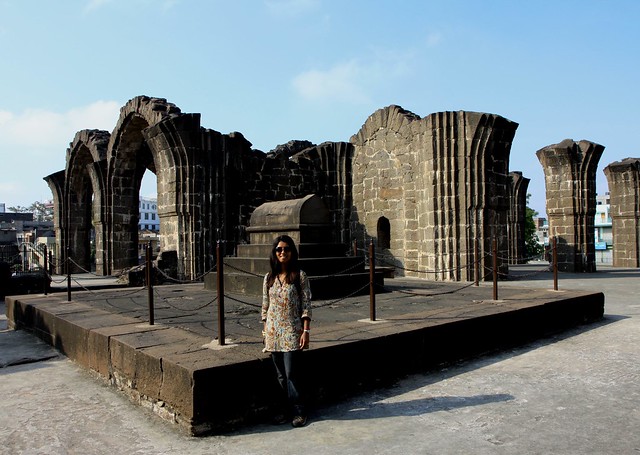
Adil Shah’s Tomb
Malik-e-Maidan
Malik-e-Maidan, Urdu for ‘The Monarch of the Plains’, is the world’s largest medieval cannon.

Malik-e-Maidan complex
A lion’s head has been carved onto the 55 ton cannon’s muzzle.

Malik-e-Maidan
Sat Manzil
Sat Manzil is a seven storied watchtower situated near the Gagan Mahal.
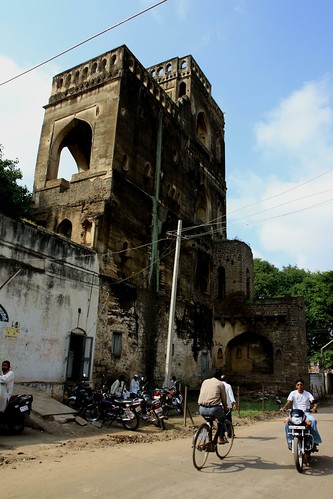
Sat Manzil
Upli Burj
This 25m watch tower, built in 1584 by Hyder Khan, offers commanding views of Bijapur and is home to two large cannons.

Cannon
Jala Manzil
Jala Manzil (Water Palace), part of the Zenana Complex, is a small structure set within a tank.
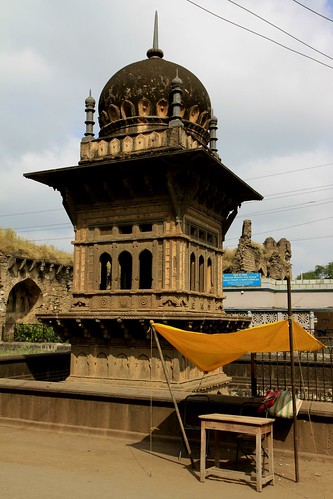
Jala Manzil
Gagan Mahal
Gagan Mahal was built by Adil Shah I in 1561 to serve as his palace and audience hall. The ruins are now part of a park which is open to public in the evenings.
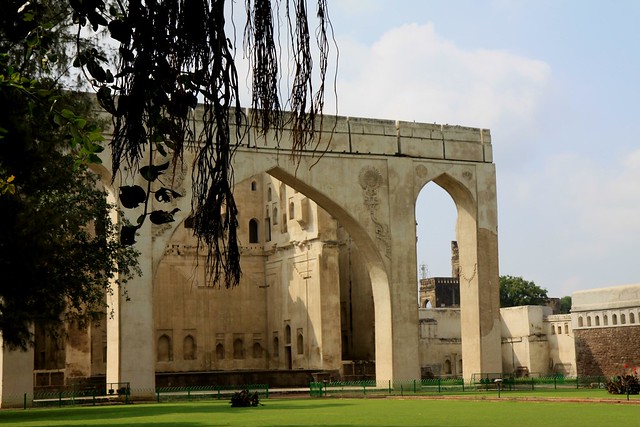
Gagan Mahal
Asar Mahal
Asar Mahal was built by Mohammad Adil Shah in 1646 to serve as a ‘Hall of Justice’. As per the local legends, the Mahal houses two strands of Prophet Muhammad’s hair.

Asar Mahal
Mehtar Mahal
Mehtar Mahal (Sweeper’s Palace) is an Indo-Saracenic gateway which leads to a small mosque.

Mehtar Mahal
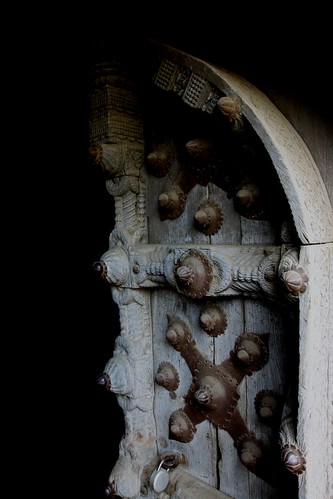
Door opening into the Mosque


No comments yet.